A few winters ago, my family and I checked into a restored 17th-century estate in the tiny town of Lower Monferrato, in Piedmont, Italy. Our bay window looked out onto rolling hills covered in grapevines and, far, far in the landscape, the snow-topped Alps. No cars passed the cypress-dotted landscape; each morning we sat down in total tranquility to a breakfast of fresh-baked bread, soft cheeses, and blood orange juice. The experience was one that many modern travelers are searching for: a few nights hidden away in a European village, experiencing the traditional culture and soul of a destination.
What is the allure of these small towns with their meandering streets, lunch-only cafés, and intimate shops? “Perhaps it is the scaled-down size, the greater ease of catching a shopkeeper’s eye, the colorful flowers hanging in a window,” says Travel + Leisure A-List travel agent Marjorie Shaw of Insiders Italy, a Rome-based agency. Writer David Farley agrees: “In a time of creeping globalization, villages offer a look into the past as well as a clearer sense of the country or region, including its food.”
So for your next European getaway, take a detour to a tiny town. Ullastret, in Spain’s Baix Empordà, is a notable Slow Food mecca: at the four-room Hotel El Fort, owner Lola Puig serves locally grown vegetables, homemade bread, and organic goat’s cheese on a lantern-lit terrace that overlooks a field of mulberry trees.
Further off the beaten path, in Arild, Sweden, the artist Lars Vilks built Nimis, a public art installation with a maze of 300-foot aboveground tunnels and a 45-foot-high climbing tower. The fishing village itself is just a two-hour drive and ferry ride from Copenhagen.
This type of experience can fulfill many expectations. According to writer Sylvie Bigar, who researched these secret places to come up with the best ones, “A tiny town offers adventure, novelty, beauty, as well as a sense of history. Knowing that some of these gems have been there for so long and have not been ‘discovered’ yet calms the spirit and brings a sense of peace.”
A plugged-in agent can help to coordinate this type of getaway. Or just put the guidebook aside, head into the countryside, and explore on your own. The return on your investment? A rewarding and unique experience and, once you return home, priceless memories and bragging rights.
Bolgheri, Italy
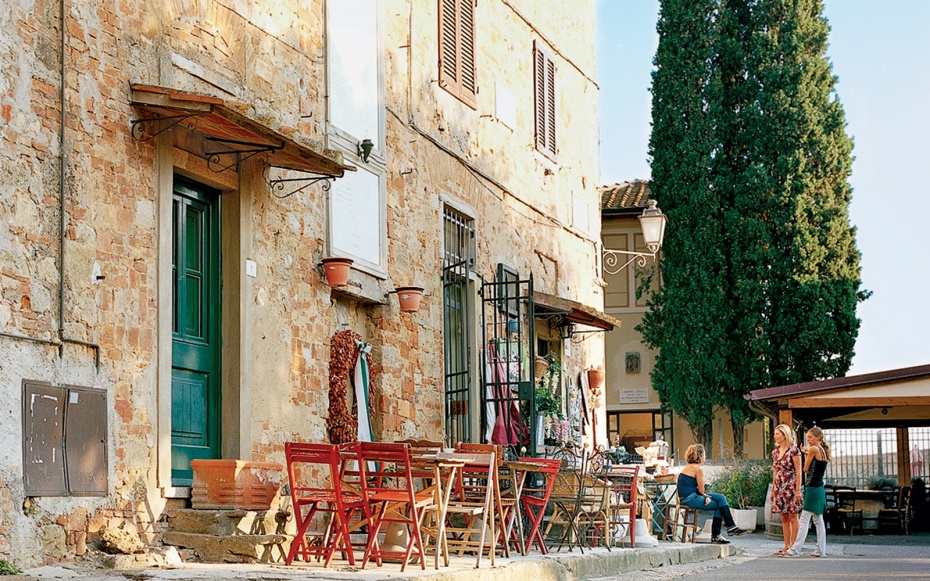
The Viale dei Cipressi, a three-mile road flanked by over 2,500 cypress trees (the only vegetation local buffalo don’t eat), leads straight into Bolgheri, which is set amid the vineyards of southern Tuscany’s Maremma. There’s more to this village than just the dramatic arrival, however. Stop in at Caffé della Posta, on the main square, to try one of Bolgheri’s reds: first produced in the 1980’s, these wines now rival French Bordeaux. In nearby Bibbona, five miles southeast, you’ll find the Relais Sant’Elena, a 15-room estate with canopy beds, stone fireplaces, and pasta-making classes.
How to Get There: Bolgheri is a 40-mile drive south from Pisa.
Where to Stay: Relais Sant’Elena (doubles from $182).
Where to Eat: Chefs Omar Barsacchi and Gionata d’Alessi serve Tuscan-Maremman cuisine (ravioli stuffed with pappa al pomodoro) at Osteria Magona (Piazza Ugo 23, 011-39-0565-762173).
Kotor, Montenegro
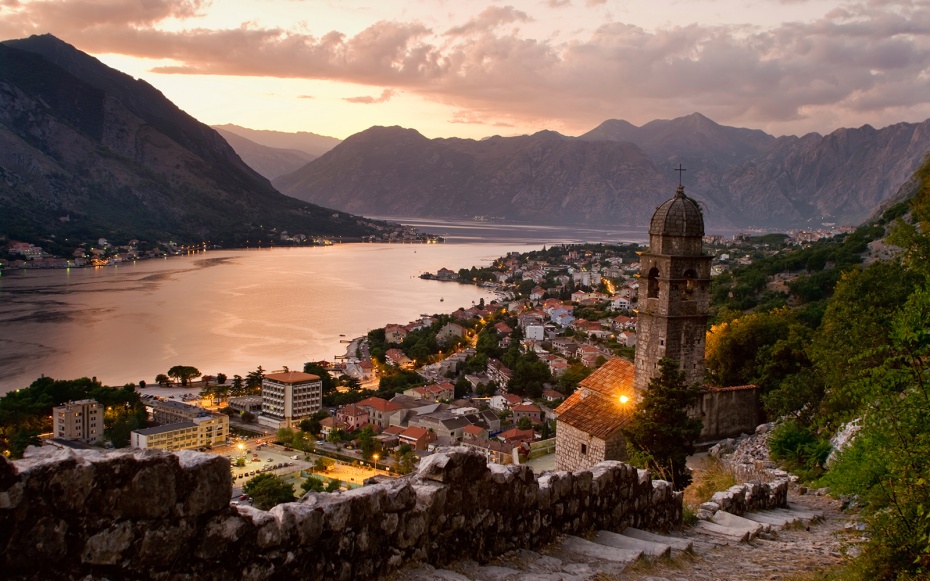
In the fall, a mist settles into the hills surrounding the bay of Kotor, so thick you can hardly see the blood-orange trees in front of you. That hasn’t stopped the tide of wealthy Europeans: British expats are selling real estate, Russians are buying farmhouses in the hills, and the dark-haired, green-eyed people of the black mountains (how Montenegro gets its name) have opened restaurants to introduce visitors to the tastes of Montenegrin stewed meat. Beaches are not yet overrun, but this wild side of the Dalmatian Coast won’t stay undeveloped for long.
How to Get There: Kotor is 50 miles from Podgorica, the capital.
Where to Stay: Palazzo Radomiri (doubles from $143) was built from Croatian stone.
Where to Eat: Stari Mlini, on a mountain stream.
Staufen im Breisgau, Germany
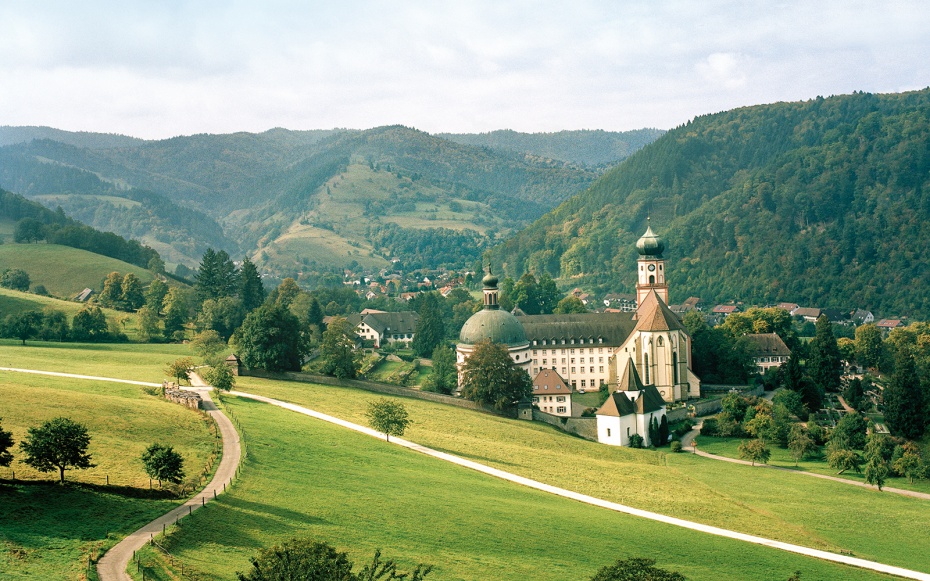
This enclave on the edge of the Black Forest, in southern Germany, is the ideal destination for a wine weekend. From Strasbourg, you’ll pass hills covered with terraced vineyards; the statue of a fat, naked Bacchus signals that you’ve arrived at the tiny downtown. Main Street’s pastel houses lead to the market place, which is crowned by the Town Hall, with a gothic inscription relating local history back to 770 on the façade. Join the businessmen in pinstripes at the outdoor wine bar, though a word to overindulgers: legend has it that any reveler who falls into one of the (sparkling-clean) irrigation ditches that run through town is destined to marry a local.
How to Get There: Staufen is 75 minutes by car from Strasbourg.
Where to Stay and Eat: Hotel-Gasthof Kreuz-Post (doubles from $136) has five rooms in patterned fabrics. Try duck breast, savory mushroom crêpes, and blood-sausage risotto at its restaurant.
Local Take: Pick up a bottle of cherry or plum eau-de-vie at theAlfred Schladerer distillery, run by sixth-generation vintner Philipp Schladerer.
Lavenham, England
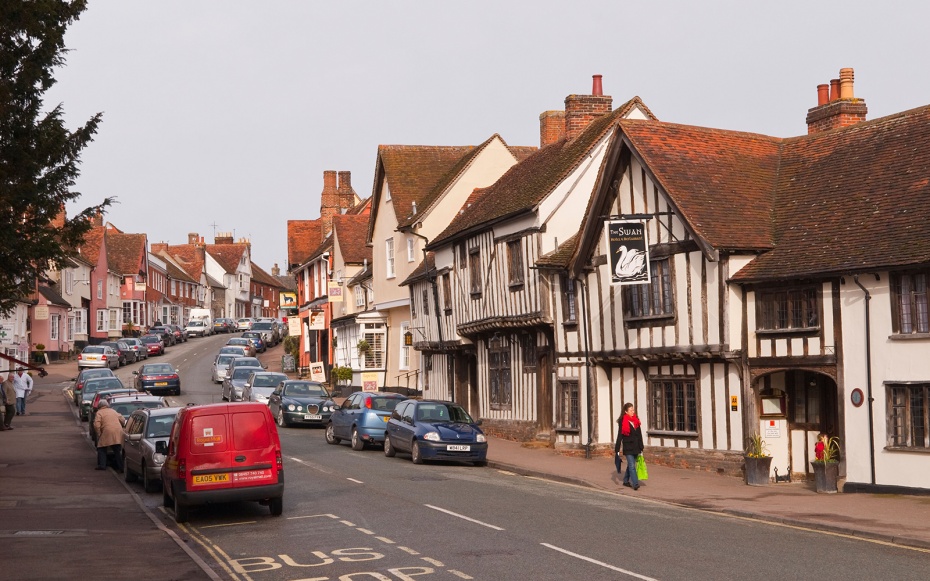
Lavenham, in Suffolk, may just be the prettiest town in England. It boasts more than 350 heritage houses and its high street is lined with the kind of bric-a-brac shops and teahouses (serving scones and clotted cream) that are on the endangered list throughout rural England—and all but extinct in glossier reaches, such as the Cotswolds and West Dorset. Sarah Townsend, former owner of the superchic Palazzo Terranova, in Umbria, was so charmed by the region that she just opened a small inn in nearby Buxhall.
How to Get There: Trains depart London’s Liverpool Street Station several times daily for Stowmarket, 14 miles away. Or, get off at Colchester and take the Chambers 753 bus line into town.
Where to Stay and Eat: The contemporary Great House Hotel (doubles from $162) is in Lavenham’s town center. The Great House Restaurant, with its gastropub take on English fare, is one of Suffolk’s finest.
Aberdour, Scotland
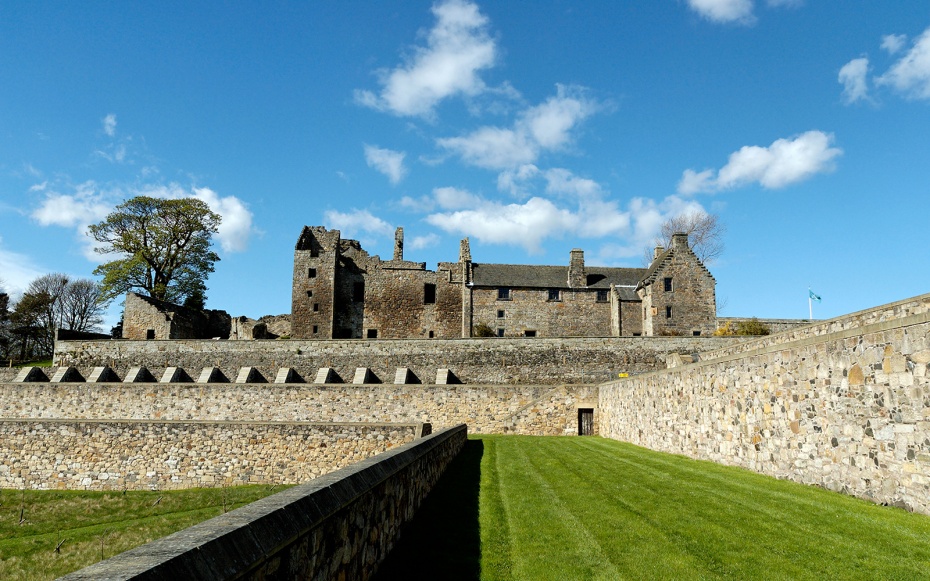
The train from Edinburgh stops at a Victorian station next to a riot of neatly planted flowers in a hidden glen in the shadow of a medieval castle. Aberdour is not car-friendly, but why should it be when anything you would want to see is in town and connected by well-kept walkways? In August, this hamlet serves as a tranquil base for visiting the Edinburgh International Festival, but for the rest of the year, it is a working village with a general store, four cozy pubs, and even a shop dedicated to Wiccan supplies, situated provocatively equidistant from the Churches of Scotland and the Scottish Episcopal Church.
How to Get There: Aberdour is 30 minutes by train from Edinburgh.
Where to Stay and Eat: Great Value The Woodside Hotel (doubles from $140) offers rooms decorated in individual tartans. The bar, whose paneling came from a 19th-century passenger ship, serves local Highland beef.
Norcia, Italy

In this eastern Umbrian citadel, artisanal culinary traditions endure. Pecorino cheese is aged for two years, trained dogs sniff out black truffles in the woodlands, and honey is sourced from the red wildflowers that bloom in the plains. But it’s the cinghiale that takes pride of place. Throughout the centro storico, the scent of spiced wild-boar salumi carries from the norcineria (delis) into the traffic-free roads. Step past the prosciutti hanging in storefronts to find shopkeepers curing cuts of the pork with methods perfected over the past 800 years. Ask them to slice up freshciauscoli, and bring it to the Piazza San Benedetto, where villagers celebrate the Festival of Saint Benedict in the spring.
How to Get There: Norcia is 69 miles northeast of Rome.
Where to Stay: The 24-room Palazzo Seneca, set in a 16th-century palace.
Where to Eat: Il Granaro del Monte, for plates of black-truffle strangozzi pasta.
Local Take: Fabrizio Marini, director of the food shop Norceria Brancaleone da Norcia, recommends visiting during the Black Truffle Festival, in February and March.
Roundstone, Ireland
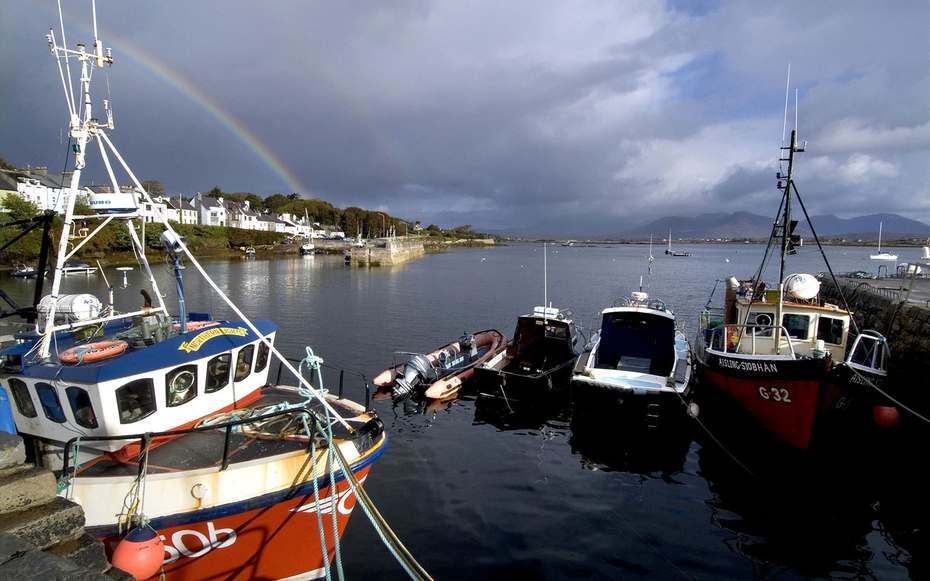
No blackberries could taste better than the ones picked along the winding lanes of Roundstone. But even the berry-averse will find reasons to love this 19th-century fishing village. Climb Errisbeg Hill for a clear view of Connemara National Park’s Twelve Bens: a mountain range rising over a vast peat bog. In case of rain—always in Ireland’s cards—head to Malachy Kearns’s shop, which sells handmade bodhran (Irish drums), or dry off by the fire at O’Dowds bar with a kit (a pint of Guinness and a shot of Irish whiskey).
How to Get There: From Galway, it’s a 76-mile drive.
Where to Stay: Family-run Cashel House Hotel (doubles from $220), on 50 acres, is just a few miles east of Roundstone.
Where to Eat: Join anglers in the bar at Ballynahinch Castle Hotelor at O’Dowds.
Chassignolles, France

Several years ago Harry Lester (formerly chef and owner of London’s Anchor & Hope gastropub) and his partner, Ali Johnson, set their sights on France’s Auvergne and bought a thirties-era stone inn in tiny Chassignolles. The village, popular with Marseilles’ elite in the 1950’s, promises dormant green volcanoes and winding streams assumed to have healing qualities. At the restored auberge, guests look out toward the 12th-century Romanesque church and can enjoy inventive meals made from local ingredients.
How to Get There: Chassignolles is halfway between Clermont-Ferrand and Le Puy-en-Velay.
Where to Stay and Eat: Great Value At the Auberge de Chassignolles (doubles from $58), white rooms are decorated with French antiques. At its restaurant, specialties from Auvergne like pounti (a pork, Swiss-chard, and prune tartine) and tarte aux cèpes are often on the menu, which changes daily.
Local Take: Try the meandering, 90-minute walk to Durbiat, an even smaller village with a crumbling castle. The chefs at the auberge will pack up a picnic basket.
Folégandros, Greece

There’s no mistaking it, this tranquil spot in the Cyclades has nothing in common with neighboring Santorini: no building stands above two stories, no cruise ships pull into port, and there are no boutiques or fancy restaurants. Instead, on this remote island in the Aegean, waves crash on pebbled beaches, goats scurry up the hills, and an old wooden windmill twists in the salty breeze. It’s a delightfully quiet escape for those who have grown tired of Greece’s more trammeled getaways.
How to Get There: Fly to Santorini or take a ferry or a hydrofoil from Piraeus, just outside Athens.
Where to Stay: Great Value There’s a nautical theme at Anemomilos Apartments (studios from $131), on a cliff with easy access to the village of Hora. Anemi Hotel is a modern newcomer with cube-shaped rooms near Karavostasi port.
Where to Eat: Irini’s, a grocery that turns into a restaurant at night, is the place for a home-cooked meal.
Giornico, Switzerland

The charm of Ticino, the Italian-speaking canton of southern Switzerland, is the not-quite-here, not-quite-there, lost-in-time feel of the place. To fully appreciate it, drive north 35 miles from the popular lake resort towns of Ascona and Locarno and find the turnoff for Giornico, a stone relic of 14th-century Europe hiding off the main road. Descend into the valley and arrive at a trickling little river crossed by two arching stone bridges. The family-run restaurants of the region are called grotte. The best, Grotto dei due Ponti, serves dishes like spezzatino (meat ragoût) with polenta and tart local Merlot.
How to Get There: From the lake resorts, drive north 50 minutes on the A13 and N2.
Where to Stay: There are no hotels in Giornico, so stay in nearby Ascona at the pink Hotel Giardino (doubles from $400).
Where to Eat: Grotto dei due Ponti has a shaded terrace that overlooks the river.
Read the full list here. This article originally appeared on Travel + Leisure
More from Travel + Leisure:
More Must-Reads from TIME
- Donald Trump Is TIME's 2024 Person of the Year
- TIME’s Top 10 Photos of 2024
- Why Gen Z Is Drinking Less
- The Best Movies About Cooking
- Why Is Anxiety Worse at Night?
- A Head-to-Toe Guide to Treating Dry Skin
- Why Street Cats Are Taking Over Urban Neighborhoods
- Column: Jimmy Carter’s Global Legacy Was Moral Clarity
Contact us at letters@time.com